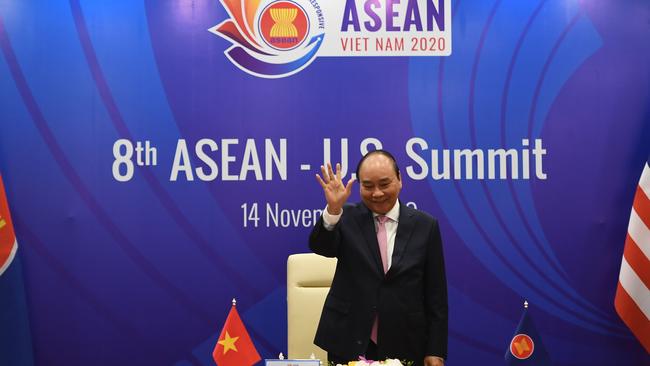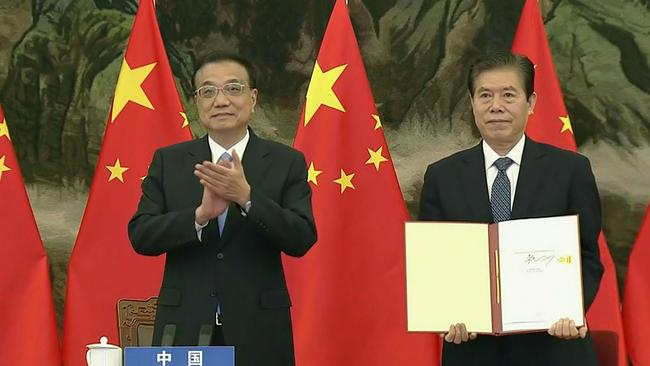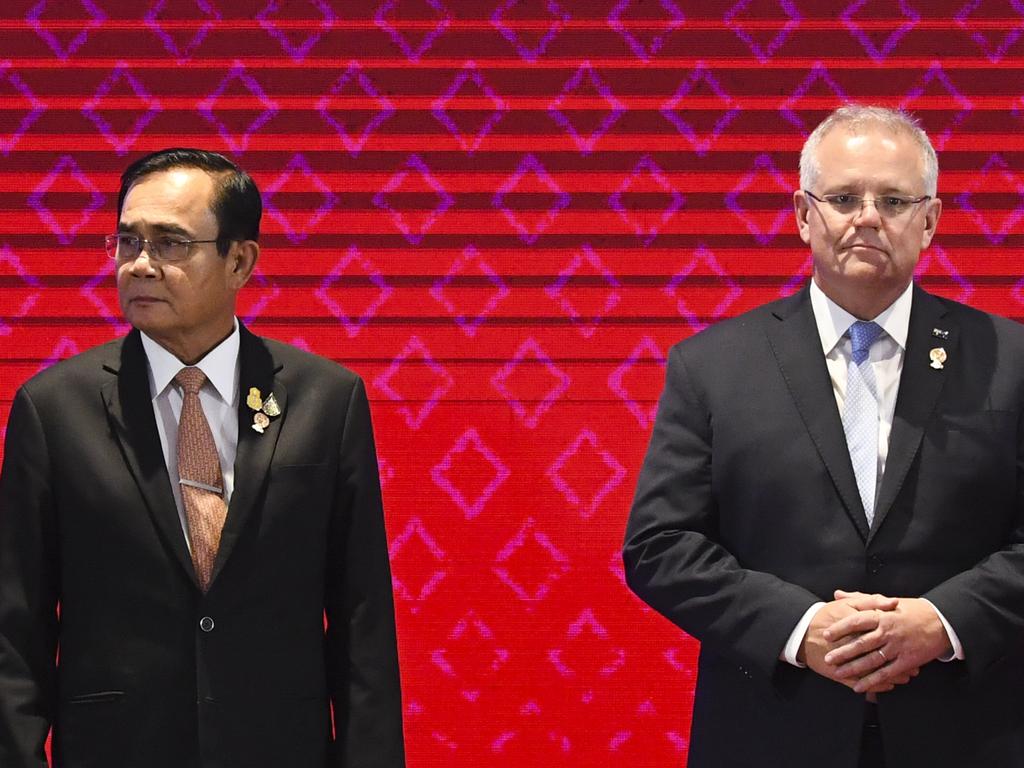Asia-Pacific nations sign major China-backed trade deal
The pact will bind their economies closer together and signals Beijing’s growing influence in the region.

Fifteen countries including China signed a major trade deal on Sunday after years of tricky negotiations, creating a regional bloc that covers around a third of global economic output and extends Beijing’s influence.
The agreement, called the Regional Comprehensive Economic Partnership, or RCEP, stretches across many of Asia-Pacific’s largest and most vibrant economies that set aside geopolitical differences to boost trade and growth during the pandemic. Apart from China, it includes Japan, South Korea, Australia, New Zealand and 10 Southeast Asian nations, from Indonesia and Vietnam to Thailand and Singapore.
“Encouraging free trade is even more important now that the global economy is in a slump and there are signs of countries turning inward,” Japanese Prime Minister Yoshihide Suga said during the RCEP meeting with other leaders, according to a Japanese government official.
The world’s largest economy, the U.S., isn’t a part of the deal. It was involved in the conception of a different bloc called the Trans-Pacific Partnership, or TPP, that didn’t include Beijing and was aimed in part at countering China’s growing clout. But Washington, which shunned big multilateral trade pacts under the Trump administration, pulled out of that pact, a modified version of which was signed by the other 11 countries in the grouping.
Although most countries that are part of Sunday’s deal already have tight trade ties — they rely on one another for goods from rice imports to semiconductor sales — their new agreement is considered significant because it will result in a more-unified trading system. That should make it easier for the region’s manufacturers to import raw materials from around the bloc without facing high tariffs, and export finished products throughout the region with lower tariffs, trade experts familiar with the deal say.

At a ceremony Sunday, which was conducted via videoconference due to the pandemic, ministers from the 15 countries signed the agreement and held up their signatures to the cameras. The deal’s completion comes after several years of growing trade tensions, particularly between the U.S. and China, that raised questions about the future of globalization.
China’s Premier Li Keqiang said that the signing showed that multilateralism and free trade “still represent the right direction of the world economy and mankind.” He said the deal is a “landmark achievement of East Asian regional cooperation” that would provide a boost to the global economy.
According to Japan’s government, the RCEP will eliminate tariffs on 91% of goods between members. It will slice trade barriers with many of Japan’s largest trading partners, raising the level of non-tariff items sent to South Korea to 92% from 19%, and to China to 86% from 8%.
Japan’s automobile industry, a key driver of the economy, stands to gain. The deal will eliminate tariffs on nearly $50 billion worth of auto parts sent to China each year — accounting for 87% of all such items exported to its western neighbor, according to the Japanese government.
Officials across the region said they expect the agreement will help countries better fight the economic hit from the coronavirus pandemic. Mohamed Azmin Ali, Malaysia’s international trade minister, called the deal an “economic recovery tool” that will help to open markets and strengthen supply chains.
The pact still needs to be ratified by national governments before going into effect.
Over eight years of negotiation, the deal faced deep challenges in balancing the interests of countries at varying stages of development. India, which was a part of the proposed grouping, withdrew last year, concerned that the deal would lead to a flood of imports. Mr. Suga of Japan said he regretted India’s decision and would encourage it to join.
Even without India, the population of the countries now part of the deal equals roughly a third of humanity.
“The fact that you could reach an agreement with all those parties including China is a significant accomplishment,” said William Reinsch, a trade expert at the Center for Strategic and International Studies, a Washington, D.C.-based think tank.
He said the U.S.’s absence from the agreement sends a message to President-elect Joe Biden’s incoming administration “that they need to give a lot more thought to what policy we want to maintain in the Pacific.”
Xiao Xiao in Beijing and Chester Tay in Kuala Lumpur contributed to this article.
The Wall Street Journal




To join the conversation, please log in. Don't have an account? Register
Join the conversation, you are commenting as Logout